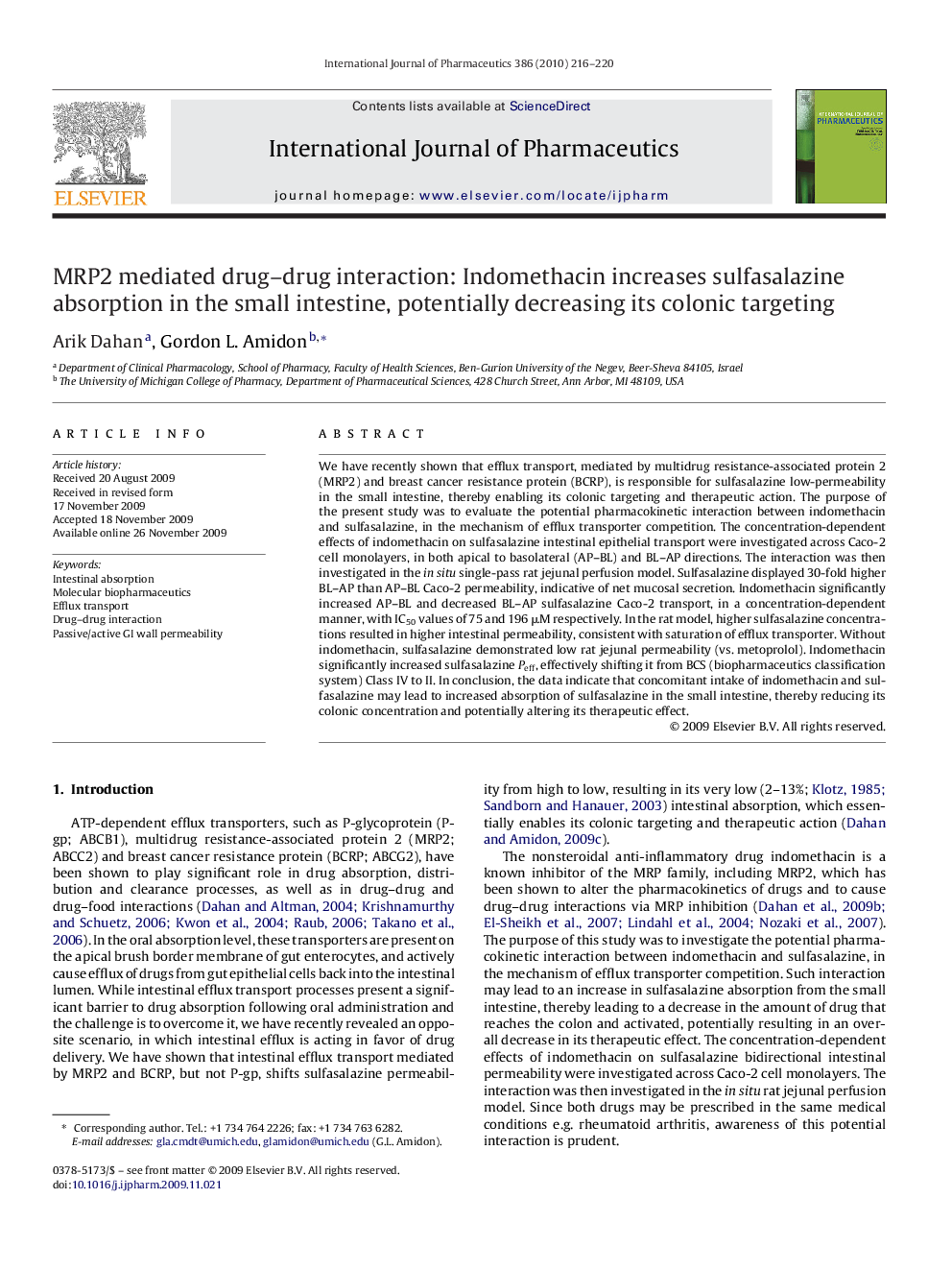| Article ID | Journal | Published Year | Pages | File Type |
|---|---|---|---|---|
| 2504533 | International Journal of Pharmaceutics | 2010 | 5 Pages |
We have recently shown that efflux transport, mediated by multidrug resistance-associated protein 2 (MRP2) and breast cancer resistance protein (BCRP), is responsible for sulfasalazine low-permeability in the small intestine, thereby enabling its colonic targeting and therapeutic action. The purpose of the present study was to evaluate the potential pharmacokinetic interaction between indomethacin and sulfasalazine, in the mechanism of efflux transporter competition. The concentration-dependent effects of indomethacin on sulfasalazine intestinal epithelial transport were investigated across Caco-2 cell monolayers, in both apical to basolateral (AP–BL) and BL–AP directions. The interaction was then investigated in the in situ single-pass rat jejunal perfusion model. Sulfasalazine displayed 30-fold higher BL–AP than AP–BL Caco-2 permeability, indicative of net mucosal secretion. Indomethacin significantly increased AP–BL and decreased BL–AP sulfasalazine Caco-2 transport, in a concentration-dependent manner, with IC50 values of 75 and 196 μM respectively. In the rat model, higher sulfasalazine concentrations resulted in higher intestinal permeability, consistent with saturation of efflux transporter. Without indomethacin, sulfasalazine demonstrated low rat jejunal permeability (vs. metoprolol). Indomethacin significantly increased sulfasalazine Peff, effectively shifting it from BCS (biopharmaceutics classification system) Class IV to II. In conclusion, the data indicate that concomitant intake of indomethacin and sulfasalazine may lead to increased absorption of sulfasalazine in the small intestine, thereby reducing its colonic concentration and potentially altering its therapeutic effect.
